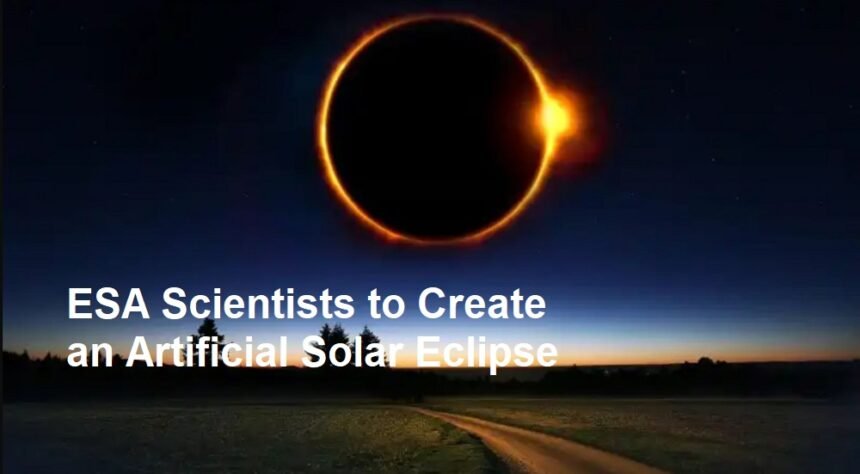In a groundbreaking experiment set to push the boundaries of astrophysics and climate research, scientists from the European Space Agency (ESA) are preparing to create an artificial solar eclipse. This ambitious project, which has captured the attention of the international scientific community, aims to simulate the conditions of a natural solar eclipse in a controlled environment to better understand the Sun’s effects on Earth’s atmosphere and space weather.
The idea behind the artificial solar eclipse is to block out the Sun’s direct rays temporarily, replicating the darkness and thermal changes experienced during a natural eclipse. Such an event typically lasts only a few minutes when the Moon passes in front of the Sun, but an artificially induced eclipse could be prolonged or repeated, allowing researchers to observe and measure the impact of sudden changes in solar radiation with unprecedented precision.
According to ESA officials, the experiment will involve the use of an advanced orbital platform equipped with a large, deployable shade designed to intercept the Sun’s light before it reaches a specific target area on Earth. This engineered shade, positioned strategically in space, will create a temporary “shadow zone” where sunlight is significantly reduced. Scientists plan to monitor the ensuing environmental changes using an array of satellites, ground-based sensors, and high-altitude balloons, which will record variations in temperature, atmospheric pressure, and ionospheric activity.
One of the primary objectives of the project is to study the immediate effects of reduced solar energy on Earth’s climate systems. Natural solar eclipses have long provided researchers with a rare opportunity to observe how sudden decreases in solar heating affect local weather patterns, temperature gradients, and wind flows. By artificially inducing an eclipse, ESA hopes to extend this observation period, enabling more detailed measurements that could improve climate models and weather prediction accuracy. Additionally, the experiment may yield critical insights into the behavior of the ionosphere—a region of the upper atmosphere that plays a crucial role in radio communications and satellite navigation.
Another significant aspect of the artificial eclipse is its potential impact on our understanding of space weather. The Sun’s radiation and solar winds are known to influence the Earth’s magnetosphere and can lead to geomagnetic storms, which have the potential to disrupt power grids, satellite operations, and communication networks. By simulating an eclipse, scientists can observe how the sudden drop in solar activity might mitigate these effects, potentially offering new methods for protecting critical infrastructure from solar storms.
ESA’s project also carries important implications for the future of space exploration. The technology developed for creating an artificial eclipse could be adapted for use on other planets or moons, where controlling sunlight might be necessary for human habitation or scientific research. For instance, on Mars, managing solar radiation is crucial for both energy production and habitat protection. The techniques perfected in this experiment may eventually contribute to the development of systems designed to moderate environmental conditions on extraterrestrial surfaces.
Despite the excitement surrounding the project, ESA scientists acknowledge that the venture comes with considerable challenges. Precise orbital positioning and the deployment of a large, lightweight shade in space require state-of-the-art technology and rigorous testing. Additionally, the team must carefully consider the potential environmental impacts on the target area, ensuring that the experiment does not inadvertently disrupt local ecosystems or human activities.
The artificial solar eclipse project is scheduled to commence later this year, with initial tests expected to take place over several weeks. ESA plans to share the findings with the global scientific community through a series of conferences and publications, fostering international collaboration in the field of planetary and climate science.
In conclusion, ESA’s initiative to create an artificial solar eclipse represents a bold step into uncharted territory. By simulating one of nature’s most awe-inspiring phenomena, scientists aim to unlock new insights into solar-terrestrial interactions, climate dynamics, and space weather mitigation—paving the way for future technological advancements and a deeper understanding of our place in the cosmos.













